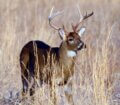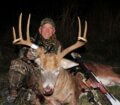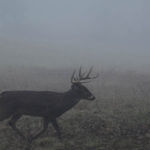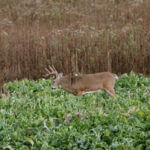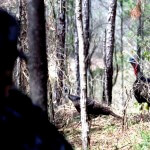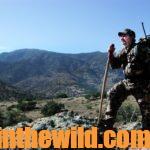Editor’s Note: What magic ingredients do the best deer hunters in the nation use to find their perfect tree stand sites? What can we learn from hundreds of years of deer-hunting experience that will help each of us pinpoint places in the woods where we can take big deer?
To learn the answers to these questions, John in the Wild has interviewed seven of the nation’s top deer-hunting experts. We’ll ask each of them to describe the best tree-stand site he ever has hunted from and to name what ingredients have made that particular site so productive that he’s bagged a big buck from that spot in the woods.
Jim Crumley, of Buchanan, Virginia, an avid, longtime bowhunter, created the first hunting camouflage, Trebark, and thoroughly studies the area where he’ll put his tree stands. “Some years ago, the fourth morning of my deer hunt in Illinois, just before daylight, I heard a deer get- up out of the leaves 50-yards from my stand and walk from his bedding site to the edge of the field, about 50-yards from his bed. The wind was in my face, so I knew I wouldn’t spook the deer. “
“After less than 5 minutes, I heard the deer walk back from the field. Fifteen minutes later I had barely enough light to see. I heard the deer get up again and walk toward the edge of the field. In the low light, I spotted large antlers and realized I’d seen this buck twice before.”
“This buck was the one I wanted to try and take.”
“The buck stood at the edge of the field for 2 or 3 minutes and then walked back into the woods and lay down in his bed. Five minutes later I heard grunting out in the field and saw a 6-point buck chasing a doe in and out of the field away from me. Another 5 minutes later, a doe came out of the woods and began to feed across the field all the way up to the spot where the buck had stopped. Then she followed his trail into the woods.”
“I heard the big buck get up out of his bed, grunt and start chasing the doe. A small ridge between the buck and me kept me from seeing him and the doe while he chased her. But the deer weren’t more than 5 or 6 yards from me.”
“Finally, I heard a deer and spotted the doe over the ridge, coming toward me on a trail not 10-yards from my tree stand. Next, I heard the buck grunt and move over the ridge. He started walking down the same trail where the doe was. But he turned off the trail that she was on and instead chose a route through a briar thicket, putting him about 18-yards from my stand.”
“I grunted at him to try to stop him from walking, as I aimed for the next opening.”
“When the buck walked through it, I took a shot at him. The buck ran about 40 yards, stomped his foot twice and looked around. I said to myself, ‘Jim, you missed the buck, but how could you have missed him?’ While I watched, the buck stumbled and then fell over dead.
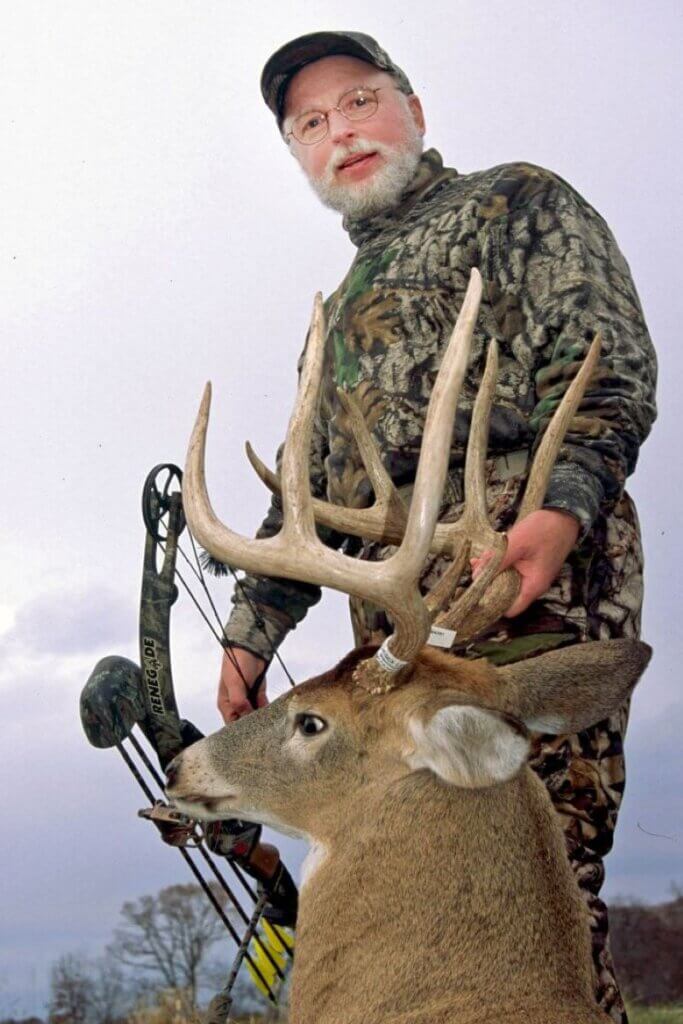
Why Jim Crumley Chose His Tree-Stand Site
“I chose this tree-stand site as one of my greatest ever because I was able to observe the buck for two mornings. Then I got to lay a plan to take that buck. My plan and my tree-stand site paid off just the way I’d hoped. I’ve been hunting for deer all my life. However, this hunt is only the second time that I’ve been able to see a buck and accurately predict his actions.
“The first morning of my Illinois hunt, I had climbed down a mountain and taken a stand in a beautiful bottom between two mountains. The area I was hunting contained a lot of oak trees and was a beautiful tree-stand site.”
Related Deer Hunting Gear
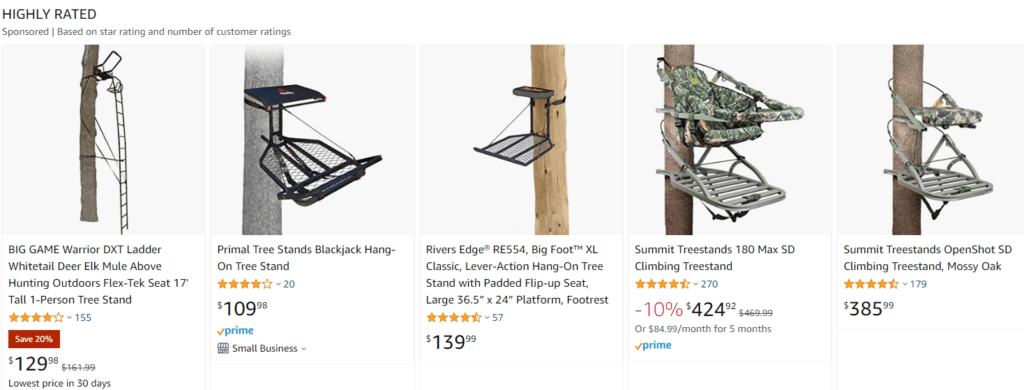
“Although I saw several deer from that stand, on the first morning of the hunt, just after daylight, I looked on top of the ridge in front of me. I spotted what I believed to be a 150-class buck chasing a doe on the rim of the mountain for about 15 minutes from 6:30 am to 6:45 am.”
“The following morning, I climbed into the same stand, expecting the big buck to come off the ridge and feed on the acorns near my tree stand. But right at daylight, I saw this same big buck chasing the doe in the same place at the same time. However, the buck and the doe never came down to feed on the acorns at the bottom.”
“After my morning hunt, I told my guide what I’d seen and asked him if we could move my stand up to where I’d spotted the buck.”
“My guide answered, ‘I’ve got another stand in my truck that we can set up on the rim. But if you’re going to hunt on the rim of that hill with a favorable wind, you have to climb down the mountain, walk past your first stand across the bottom, climb up the other mountain and get into the new stand. You’ll have to make that hike in total darkness and sit in your stand at least 45 minutes to an hour before daylight.’ I agreed to the plan.”
“So, in the middle of the day, we put the tree stand in the tree that I thought I would use to hunt. I decided not to go to that stand that afternoon or the next day to let the area rest and to allow the buck to settle down. I figured he might have smelled us.”
“The tree I had picked was 5 feet from a severe drop-off on the rim of the mountain. In front of me, I could see the edge of the field less than 50-yards away. I had a bottleneck to hunt, with the field edge on one side of the bottleneck and the drop-off on the other side. Two deer trails, one paralleling the field edge and the other paralleling the edge of the mountain, were there.”
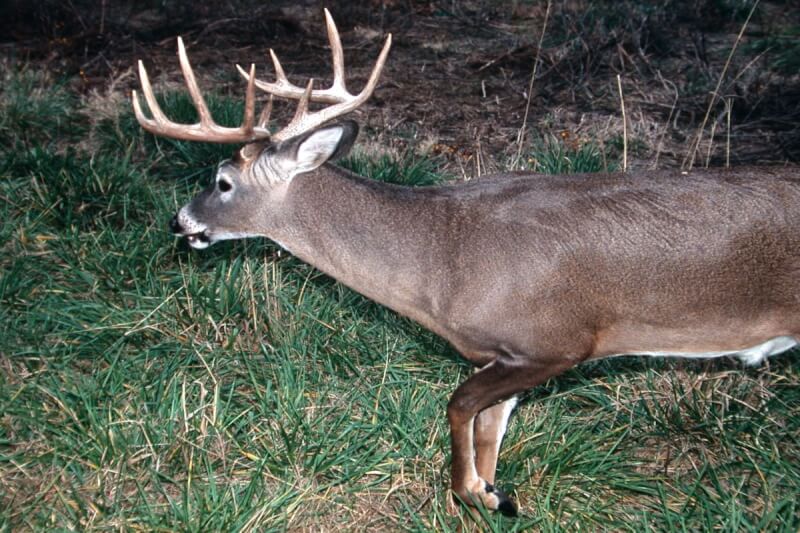
“On the fourth morning of the hunt, I made the hike, climbed the mountain, and got into my stand. The wind was blowing in my face. As soon as I’d gotten my bow and my pack pulled up into my stand, I heard the deer get up out of his bed for the first time. I returned to where I’d heard him get out of his bed and saw a trail that led from the buck’s bed to the trail.”
“This smart old buck had learned that the does would come out of the field just before or just at daylight, walk this trail and then go into the bottom to feed.”
By bedding close to the trail, he could use his nose to smell every doe that came out of the field. If he smelled an estrous doe, he could get up and give chase.”
“I think when that buck got up, walked to the edge of the field, and returned to his bed, he was simply looking to see if any does were in the field. When he didn’t spot one, he went back and lay down. Because I was hunting a bottleneck, I’d seen the does pick up that buck at daylight, and I had the wind in my favor. I took the biggest buck I ever had taken with my bow because I was willing to make a long walk in the dark to reach my stand site before daylight. The buck grossed 154 inches on Pope & Young.”
More Advice from Pros You Know in John’s Books
Since deer hunting and deer hunters are drastically changing each year, John interviewed some top deer hunters like Mark Drury, Dr. Larry Marchinton, Dr. Bob Sheppard, Pat Reeve, Gene Wensel, Cody Robbins, Ernie Calandrelli, Brian Murphy and Luke Brewster, who took the world’s largest whitetail, to learn their up-to-date techniques for successfully hunting deer and having more places to hunt.
Too, check out John’s book, “Bowhunting Deer: the Secrets of the PSE Pros,” available now in Kindle, print, and Audible versions.
When you click on these books, notice on the left where Amazon says you can read and hear 10% of the Audible books for free. You can click on Buy the Audible book on the right side of the pages and below the offer for a free Audible trial.
Tomorrow: Hunt Midwestern Deer Stands & Cane Thickets

